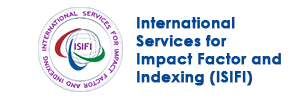
Journal Basic Info
- Impact Factor: 1.995**
- H-Index: 8
- ISSN: 2474-1647
- DOI: 10.25107/2474-1647
Major Scope
- Otolaryngology - Head and Neck Surgery
- Bariatric Surgery
- Pediatric Surgery
- General Surgery
- Minimally Invasive Surgery
- Emergency Surgery
- Breast Surgery
- Plastic Surgery
Abstract
Citation: Clin Surg. 2020;5(1):2775.Research Article | Open Access
Pattern and Outcome of Surgery for Degenerative Disease of the Lumbar Spine using the Visual Analogue Score (VAS) and Oswestry Disability Index (ODI) at a Tertiary Hospital
Ugwuanyi Charles*, Anigbo Anthony, Nwaribe Evaristus, Ayogu Obinna, Okpata Cyril and Salawu Morayo
Neurosurgery Unit, National Hospital Abuja, Nigeria
*Correspondance to: Ugwuanyi Charles
PDF Full Text DOI: 10.25107/2474-1647.2775
Abstract
Introduction: With the sustained evolution of complex spine surgery in our service, there is an increasing concern about safety, clinical outcome and overall patient confidence. There emerges a need to determine the outcome of surgery using standard clinical parameters (VAS and ODI). Methodology: A retrospective review of cases of lumbar spine surgeries performed at the National Hospital Abuja from Jan 2015-Dec 2017 was conducted. Main study parameters were VAS and ODI before and one year after surgery. Data was assembled in Excel spreadsheet and analyzed with SPSS version 21. Results were presented in tables and charts. Results: 41 cases met selection criteria. Mean age 50.56 ± 10.99 years. 22 (53.7%) females, 19 (46.35%) males. M:F= (1:1.15). 22 (53.65%) had chronic radicular low back pains. 12 (29.2%) had neurogenic claudication, while 7(17%) presented with paraparesis. Mean time to presentation was 15.33 ± 12.09 months. 25 (60%) presented within a year of onset of symptoms but only 4 (10%) presented after 2 years. Mean pre-op VAS was 8.07 ± 0.712. 32 (78%) recorded VAS >7. Mean pre-op ODI score was 81.95 ± 12.11. 28 (68.2%) recorded ODI of 81 to 100 range. Commonest pathology was lumbar canal stenosis. Commonest level involved was L4/5 in 21/40 (52.5%). The commonest operative intervention was Posterior Lumbar Interbody Fusion (PLIF) in 31/41(75.6%) followed by Primary Posterior Lumbar Decompression (PPLD) 10/41(24.3%). The most important post op complication was deep wound/implant infection in 1/41 (2.4%). Mean post op VAS was 1.76 ± 1.51. (P= <0.05). 34 (87.8%) recorded VAS, ≤ 2 but 5 (12.2%) had VAS ≥ 3. Mean post op ODI was 10.5 ± 14.24. 27 (65.8%) recorded significant improvements in the ODI but 1/41 (2.4%) maintained a similar ODI score post op. Conclusion: There is a significant improvement in VAS and ODI following surgical intervention with minimal complication. Therefore, there should be no hesitation in recommending this treatment when the need arises.
Keywords
Degenerative Lumbar Spine Disease; Lumbar Decompression and Fusion; Visual Analogue Score (VAS); Oswestry Disability Index (ODI)
Cite the article
Charles U, Anthony A, Evaristus N, Obinna A, Cyril O, Morayo S. Pattern and Outcome of Surgery for Degenerative Disease of the Lumbar Spine using the Visual Analogue Score (VAS) and Oswestry Disability Index (ODI) at a Tertiary Hospital. Clin Surg. 2020; 5: 2775..













